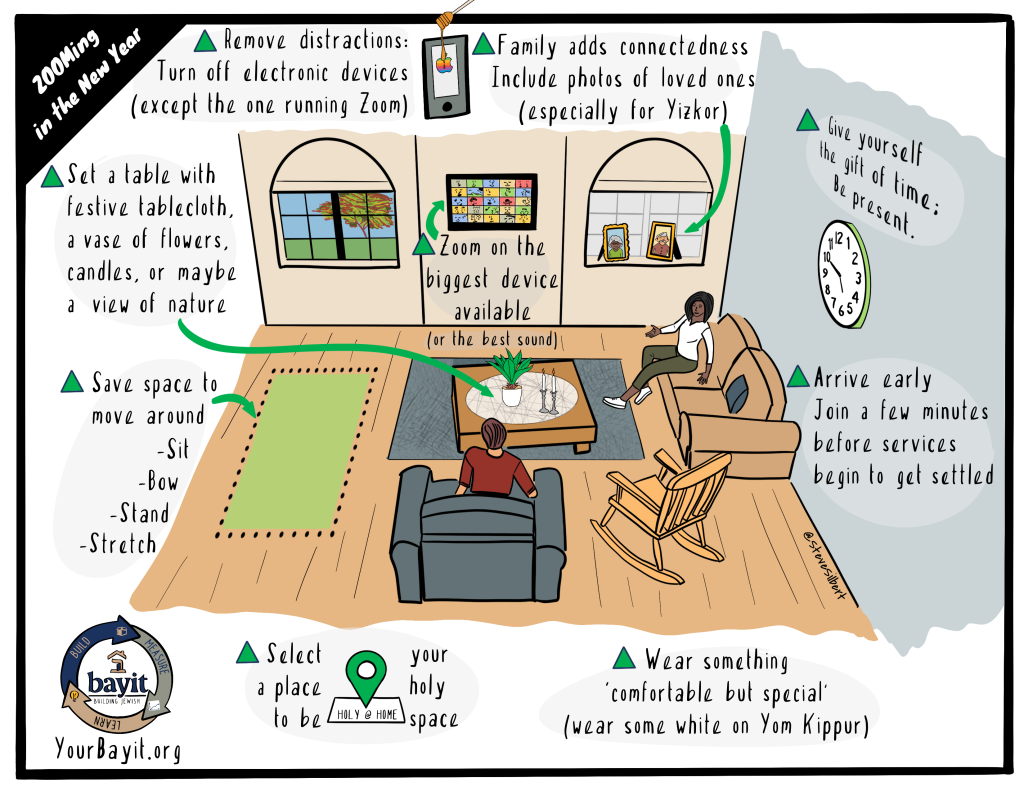[youtube https://www.youtube.com/watch?v=IcNzg50fw7g]
This is the second post in a series; the first was Seven weeks until Rosh Hashanah. This one is available as a YouTube video (embedded above — or here at YouTube) and also as text that appears below.
Dear CBI Members and Friends,
Today I’m writing with an invitation to think about how to make our home prayer space feel like sacred space.
When the Temple was destroyed so long ago, we had to learn how to connect with God and holiness and tradition from smaller sacred spaces in all the places to which we were scattered. (That’s how the synagogue became the center of Jewish life and practice.) In today’s pandemic reality, we’re in a new kind of diaspora — scattered into our homes for safety’s sake. We need to learn how to sanctify our homes, how to make our home-spaces feel holy.
Many of us use the same table for meals, for homework or paying bills, and for joining Zoom services. (And we likely use the same laptop or tablet or phone for secular purposes and for sacred ones, too.) How can we transform a home-space into a prayer-space, and how can we use our devices to help us focus instead of distracting us? Here are some ideas:
- a festive tablecloth on which to place your laptop or tablet or streaming device;
- a scarf or piece of pretty fabric to use as a table runner to make it extra-special;
- a vase in which to put flowers on your festive table;
- candlesticks in which to light festival candles on the eve of each holiday;
- a framed photograph of loved ones on your table next to your Zoom device, to connect you with family and friends in this pandemic time (this may be especially meaningful on Yom Kippur when we say Yizkor memorial prayers);
- go for a walk in the beautiful Berkshire outdoors and find beautiful objects in nature (stones, shells, pebbles) to place on your table.
I’ve found that putting down a tablecloth makes a big difference — it transforms the table where I pay bills and my kid plays Minecraft into a table that evokes Shabbat and seder and other special times. For the Days of Awe, I’m thinking about making a centerpiece out of a bowl of apples and pomegranates to remind me of the season.
On a more prosaic note, when it comes to Zoom services, I recommend closing other apps or windows or browser tabs once services begin (and silencing all notifications on our cellphones and tablets until services are over). This way we can make ourselves fully present to the liturgy and to each other, rather than allowing our devices to distract us from the holy work we’re coming together to do.
May our journey toward the Days of Awe be meaningful and sweet!
Rabbi Rachel
Edited to add: Here’s a sketchnote by my friend and colleague Steve Silbert, created to accompany this post!







